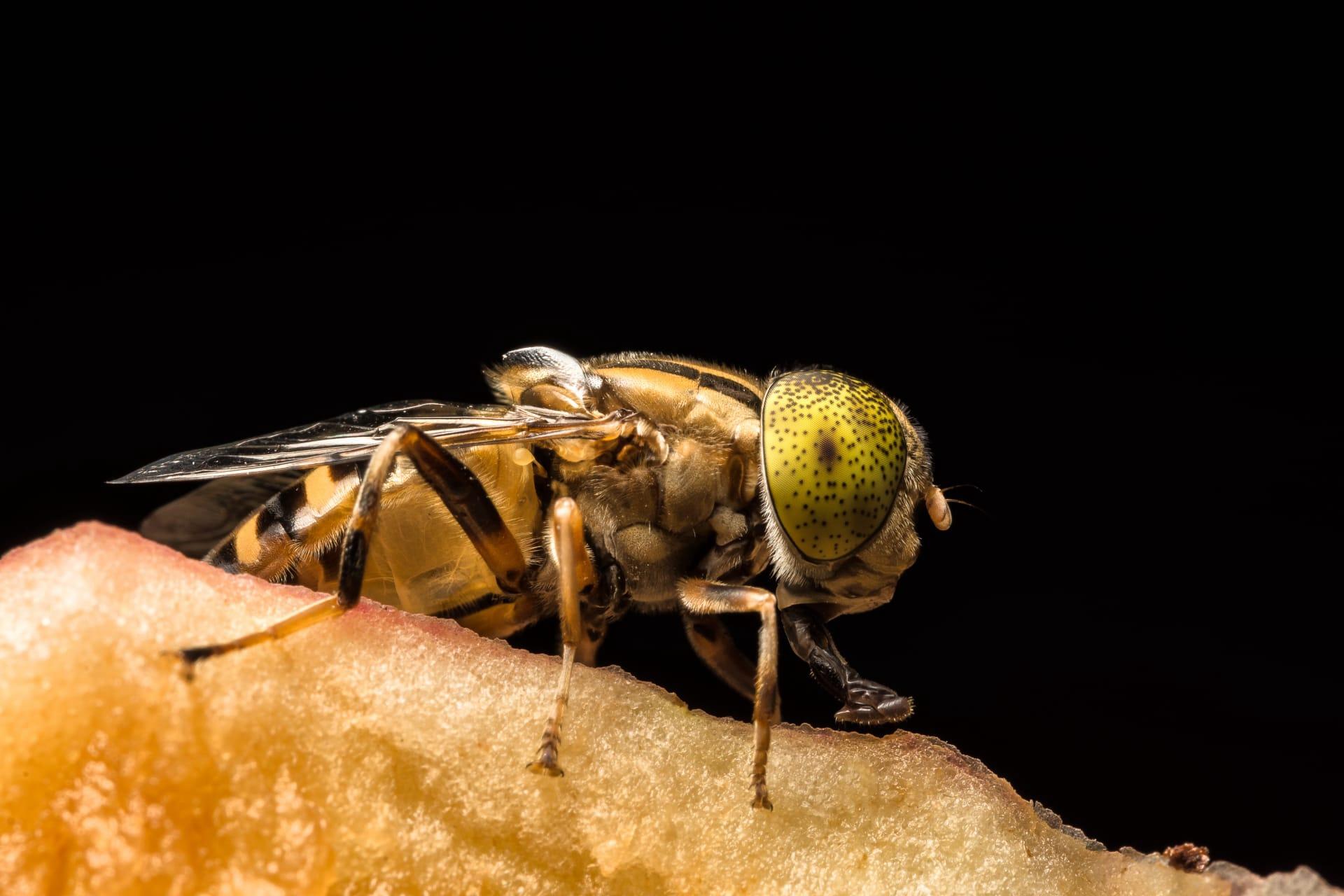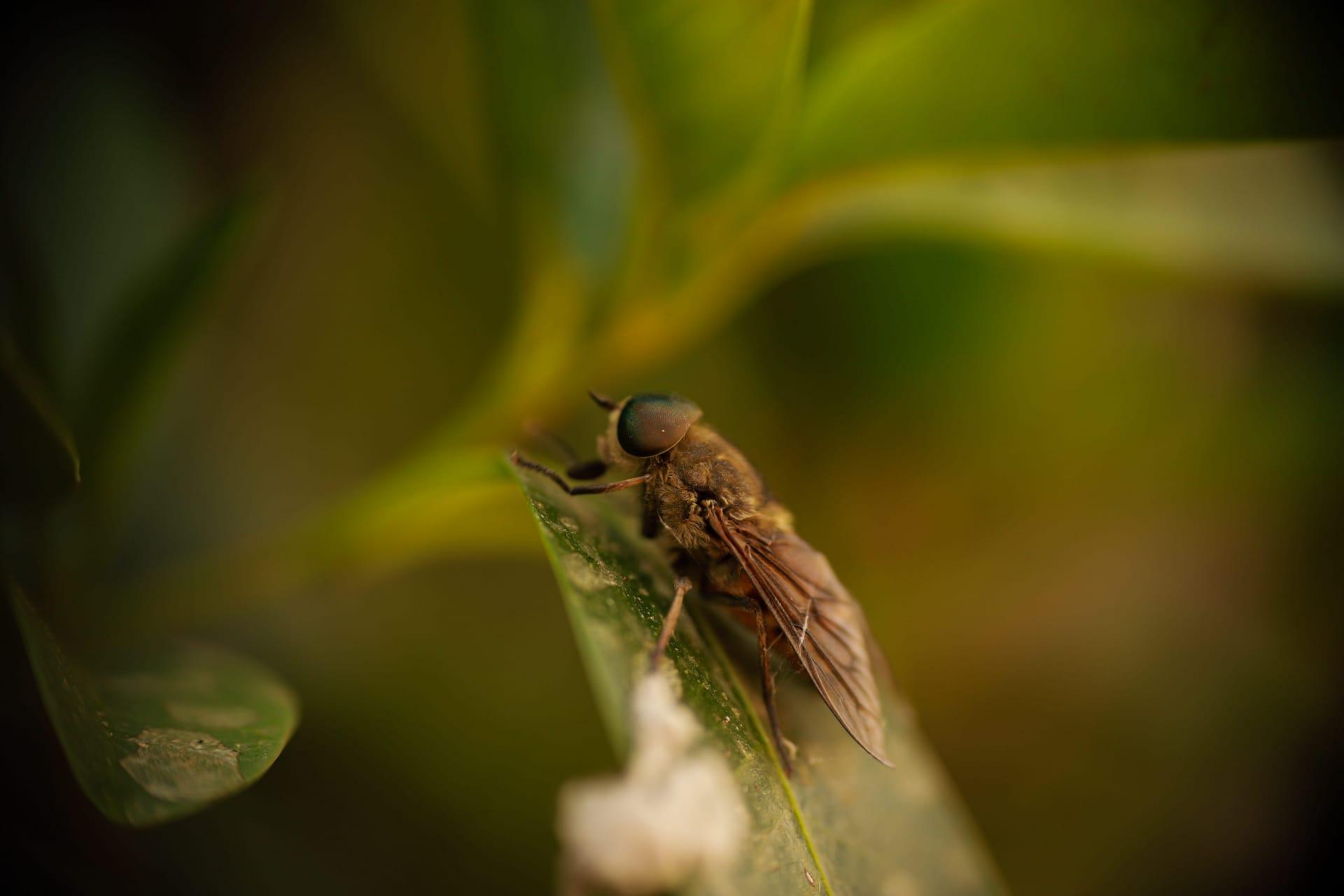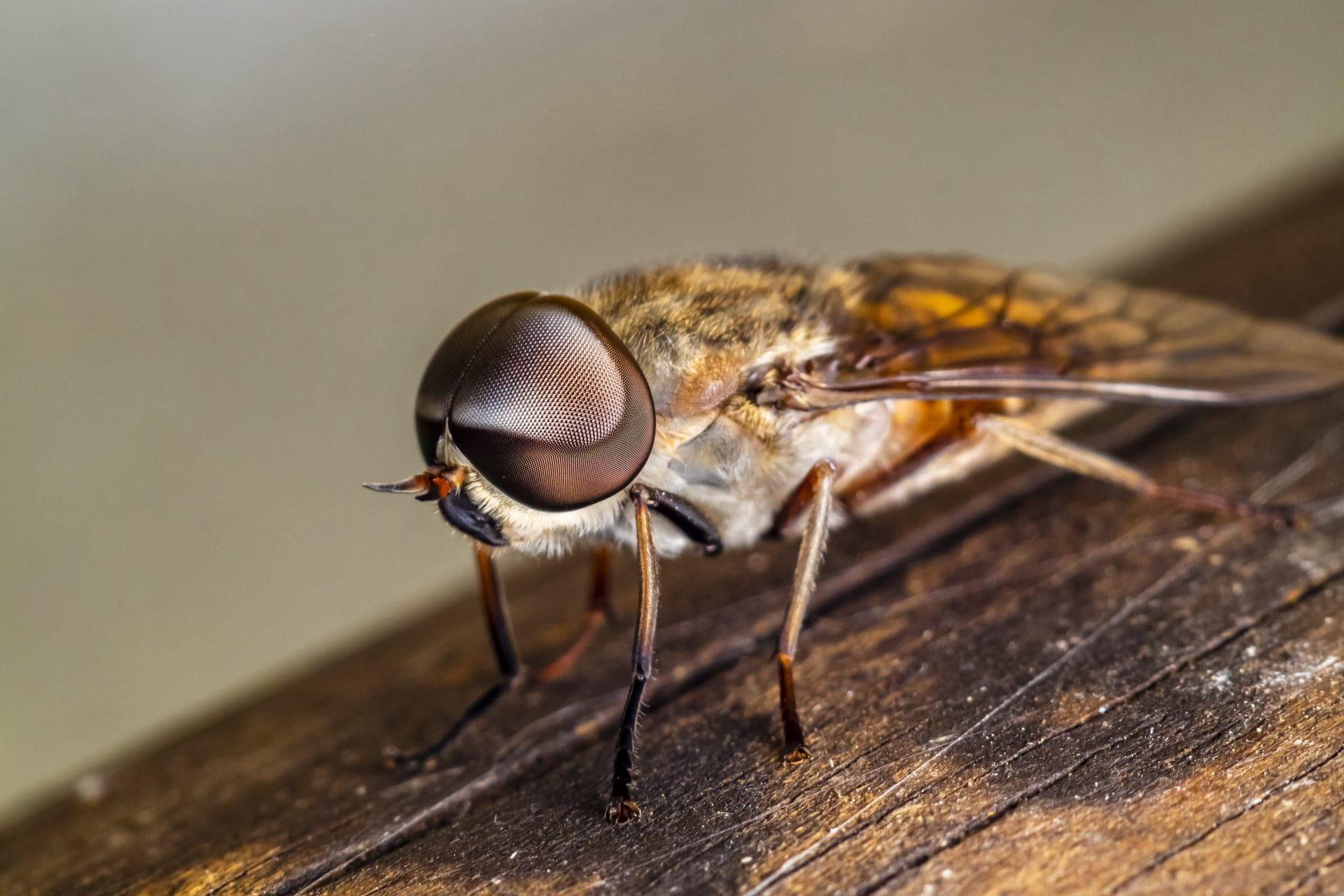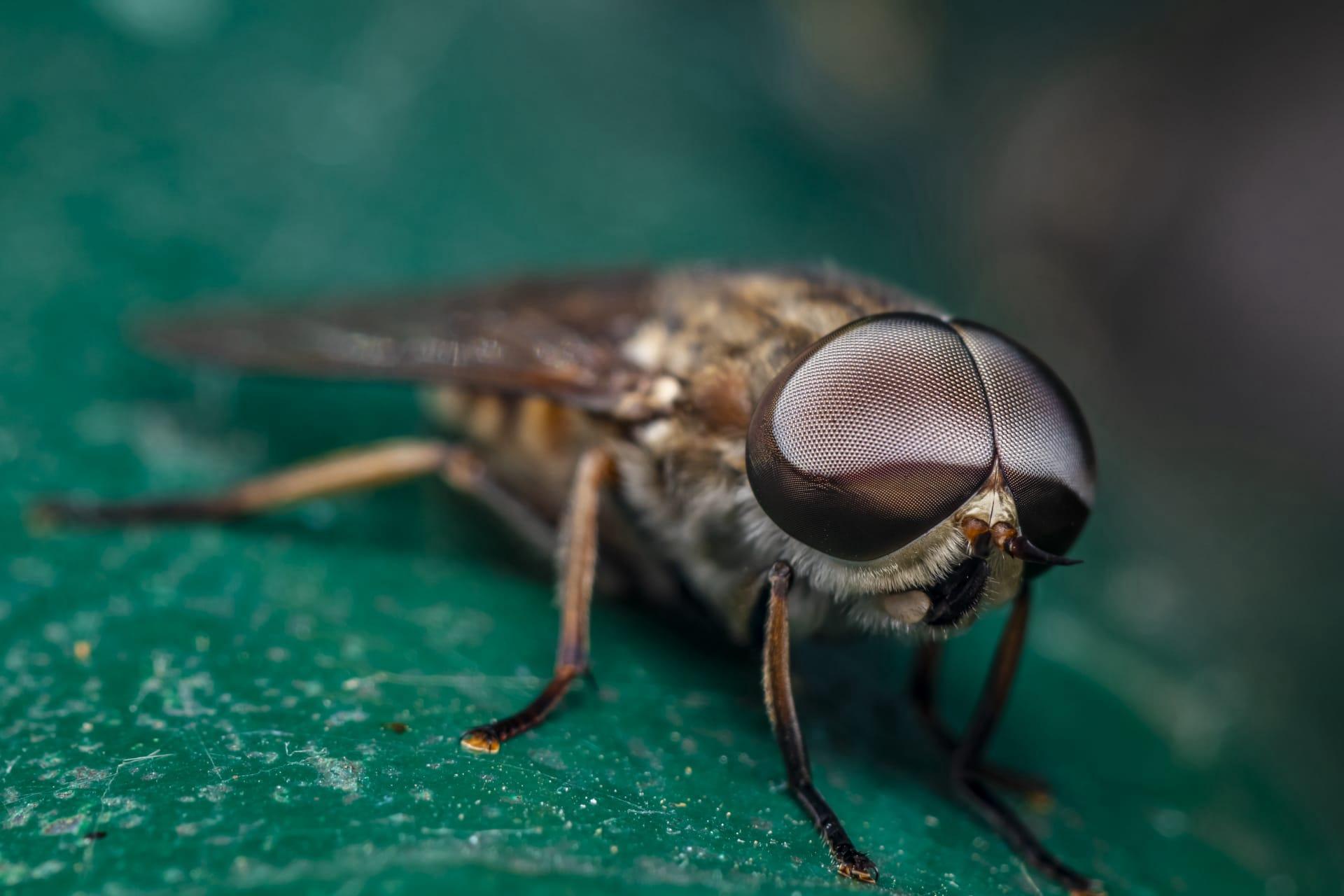1
Did you know that horseflies, those pesky insects, are actually quite the aerial acrobats? They can reach flying speeds of up to 90 miles per hour, making them one of the fastest flying insects. This speed is not just for show; it's a critical part of their hunting strategy. They rely on this swift movement to catch their prey, which often includes larger animals like horses and cattle. Their quick and agile flying skills help them evade the swatting attempts of these animals, ensuring their survival and ability to feed.
Horseflies are not only fast but also have a unique way of tracking their targets. They are equipped with compound eyes, which consist of thousands of individual lenses. This gives them an almost 360-degree field of vision, allowing them to see movements from almost any direction. These eyes are particularly effective in bright sunlight, which is when horseflies are most active. This excellent vision aids them in locating potential food sources and avoiding predators. The intricacy of their eyes also contributes to their ability to navigate and maneuver at high speeds, making them formidable hunters in the insect world.

2
Another fascinating aspect of horseflies is their role in the ecosystem. While they may be a nuisance to humans and animals, they are important pollinators. Horseflies, particularly the females, are attracted to the nectar of certain flowers for energy. During this process, they inadvertently transfer pollen from one flower to another, aiding in plant reproduction. This is crucial for the maintenance of diverse plant communities, which in turn supports a variety of wildlife.
When it comes to feeding, female horseflies have a rather unique method. They possess scissor-like mouthparts that are capable of slicing through the skin of animals, including humans. This allows them to access the blood, which is essential for their egg production. The design of their mouthparts is such that it causes minimal discomfort at first, often going unnoticed by their host. This stealthy approach gives them enough time to feed before the host reacts. Interestingly, it's only the female horseflies that feed on blood; males primarily feed on nectar and are harmless to animals and humans.

3
Did you ever wonder how horseflies manage to be so persistent, even in windy conditions? Their strong and robust bodies enable them to fly in stronger winds than most other insects. This ability is not just a testament to their strength but also an evolutionary adaptation. Being able to fly in various weather conditions allows them to access a wider range of habitats and food sources. This resilience contributes to their widespread presence across different environments.
Another intriguing fact about horseflies is their life cycle, which is quite complex. They go through a complete metamorphosis, which includes the stages of egg, larva, pupa, and adult. The larval stage is particularly interesting; horsefly larvae are aquatic or semi-aquatic and can live in a variety of moist environments, including marshes, ponds, and even wet soil. These larvae are predators, feeding on other small invertebrates. This predatory nature from a young age plays a significant role in controlling the population of other insects and maintaining ecological balance.

4
Horseflies have an unusual approach to temperature regulation. On cooler days, they can often be found basking in the sun to raise their body temperature. This behavior is crucial for their survival as it enables them to be active and efficient hunters. Their ability to regulate body temperature allows them to adapt to various climatic conditions, making them a common sight in both warm and temperate regions.
Interestingly, horseflies are also known for their persistence in pursuit of a blood meal. Once a female horsefly sets her sights on a host, she can pursue it relentlessly. This persistence is driven by the necessity of blood for egg production. However, their pursuit can be so intense that it often puts them at risk of being swatted or exposed to predators. Despite these dangers, their evolutionary drive to reproduce compels them to continue their pursuit, showcasing the remarkable determination of these insects.

5
The sensory abilities of horseflies are not limited to their exceptional vision. They are also equipped with sensitive antennae that can detect carbon dioxide and warmth, which are emitted by potential hosts. This ability allows them to hone in on animals and humans from a distance, even before they are visible. The antennae play a crucial role in their hunting strategy, guiding them towards a food source with remarkable accuracy.
Finally, while horseflies are often seen as pests, they have a lesser-known beneficial aspect. They are a vital part of the food chain, serving as a food source for various birds, amphibians, and other insects. This makes them an integral component of their ecosystems, contributing to the overall health and balance of their habitats. Their presence, while sometimes annoying, plays a crucial role in maintaining the biodiversity and ecological equilibrium of their environments.